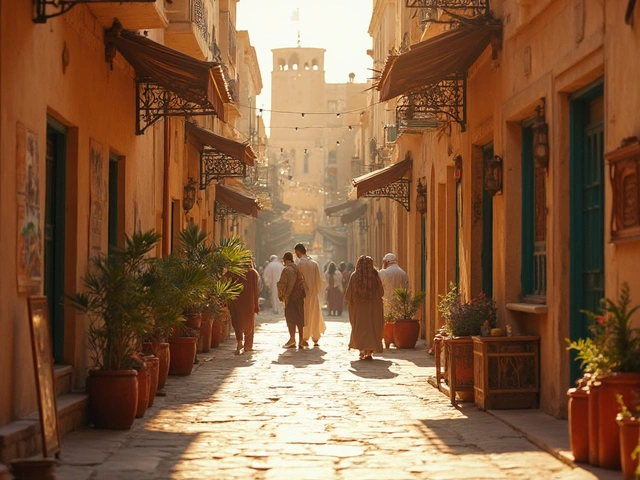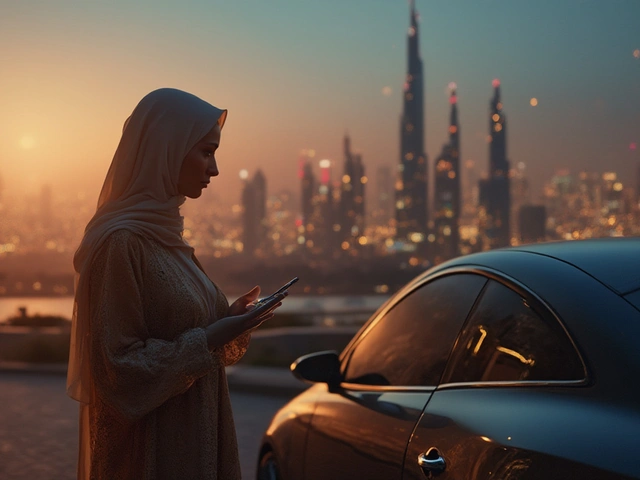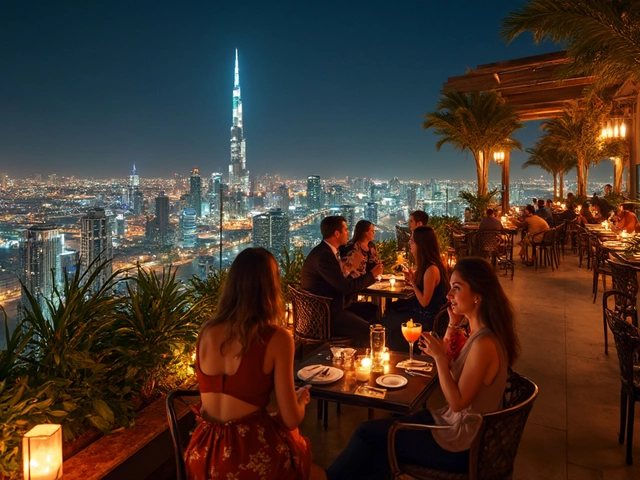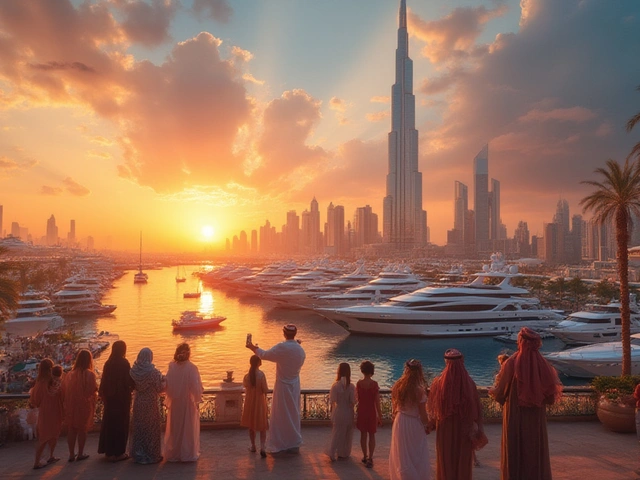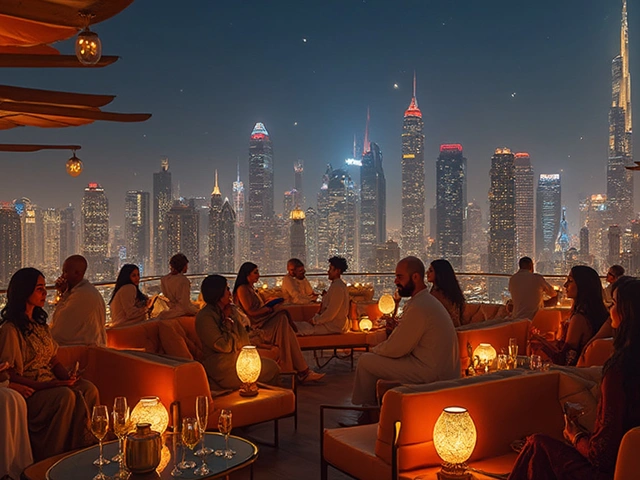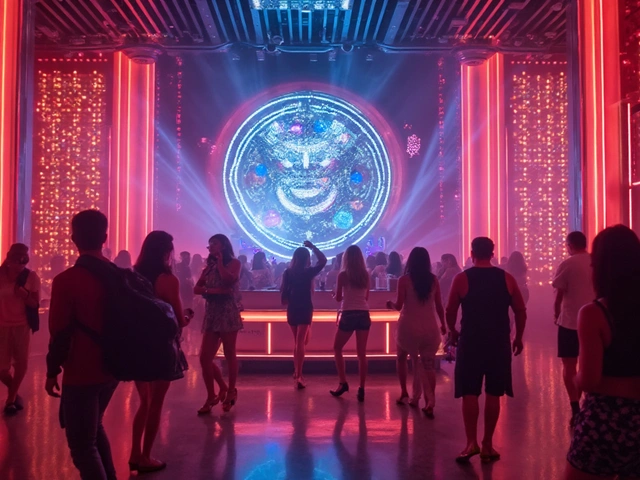You’re driving down Sheikh Zayed Road and—bam!—there’s that unmistakable outline that even people halfway across the globe recognize. Dubai’s Palm Jumeirah isn’t just an artificial island. It’s the ultimate “how did they even build that?” question brought to life. Everyone you know, from weekend brunchers trying out the best new cafes on The Pointe, to tourist families snapping sunset selfies with the Atlantis in frame, has a Palm Jumeirah moment. But how did this monumental landmark in Dubai become so legendary? The story is bursting with ambition, crazy experiments, sand (so much sand), and a little bit of everyday magic that keeps residents and visitors obsessed to this day.
The Vision: Turning Fantasy into Dubai’s Coastline Reality
Back before skyscrapers began racing up the Dubai skyline, city planners had an idea: make more beachfront, because, honestly, where do you fit a new crowd of luxury-hungry expats and tourists if your coastline’s already packed? Palm Jumeirah was first announced by Nakheel in 2001. At that time, Dubai was craving a showstopper—a new Dubai attraction that would spark global curiosity. Sheikh Mohammed bin Rashid Al Maktoum dreamed up an island you could see from space, shaped like a palm tree—emblematic for the region and woven into the culture’s meaning of prosperity. He didn’t just want to challenge what’s possible. He wanted to put Dubai firmly on the world map for the coolest, boldest real estate on the planet.
No one had ever tried anything close to this scale before. The project needed design input from international experts, civil engineers, and environmentalists—a carefully managed collaboration that still had a whole lot of risk attached. Building an island with a trunk, 17 fronds (they started with 16), and a crescent-shaped breakwater meant managing not only vast money but also tides, marine life, and governmental red tape. The vision was more than a flashy skyline—it was a new Dubai neighborhood, with schools, hotels, shops, mosques, and play spaces for families. My daughter Lorelai actually picks out the palm shape when we’re at Jumeirah Beach Park, it’s become so much a part of the view that for most of us, it feels like it has always belonged.
Some features were chosen with locals in mind. Each frond was designed to maximize privacy and exclusive sea access, appealing to Emirati residents valuing family gatherings. Consider the way beachfront properties were zoned; if you’re walking on the easternmost fronds, you’re likely to find tight-knit, multi-generation families hosting weekend BBQs on their private sand, while at the trunk’s Golden Mile Galleria, you see joggers, artists sketching, and kids in every language from Arabic to Filipino giggling over frozen yogurt.
The Making: More Than Moving Mountains—It’s About Shaping Seas
So how do you build a palm-shaped island in Dubai’s Gulf waters? Most of us have seen the timelapse videos showing an endless parade of dredgers dumping sand, but the numbers are wild. They shifted roughly 120 million cubic meters of sand (to picture that, it’s more than the Great Pyramid of Giza—times 60) and 7 million tons of rocks. These didn’t just come from anywhere. Much was carefully sourced from the UAE’s own Hajar Mountains. This precise direction was not just for control, it was sustainability: using local resources meant environmental impact could be monitored and managed.
They managed the shape with GPS-guided tech—back then, pretty groundbreaking—in order to achieve the neat palm structure and crescent that now stands out on maps. The Crescent, which encircles the Palm’s crown, is a breakwater built to shield the fronds and trunk from rough waves, but it does double duty as a scenic drive and a host for record-making hotels. The most famous? Atlantis The Palm, which seems to be in every family’s photo album since 2009’s grand opening, with its pink towers and waterpark. Atlantis was quite literally the first luxury resort to open on the Crescent, setting a new luxe standard for all newcomers.
What makes the engineering extra special is how Nakheel made the fronds self-sustaining. Tidal flows were engineered into the design—even adding new openings in the breakwater after tests revealed stagnant water and seaweed build-up. The success of this infrastructure means that today, marine life thrives between the fronds—something that’s always a hit at kids’ school projects, since there’s a real ecosystem living where there used to be only deep water. By 2006, the major groundwork was done; by 2008, properties were being handed over, and new residents woke up to their private stretch of beach.
Got a taste for numbers? Here’s a quick look at what went into the making:
| Fact | Detail |
|---|---|
| Sand Used | 120,000,000 cubic meters |
| Rock Used | 7,000,000 tons |
| First Residents | 2007 |
| Total Length | 16.5 km coastline |
| Number of Fronds | 17 |
For locals and long-time expats, there’s a weird pride about watching a familiar view rise from the waves year after year. Some families have photos at the same spot each season, showing the island taking shape—kind of like the world’s longest time-lapse selfie project.
Palm Jumeirah Today: Daily Life and Destinations for Everyone
Fast-forward to 2025, and Palm Jumeirah isn’t just an iconic landmark for the tourists flooding in from Europe or China. It’s a lived-in, vibrant community. If you’re a Dubai resident, you might have a friend who’s always tagging you in insta-stories from a penthouse brunch on the Palm, or you may daydream about spa weekends at Anantara. Or, if you’re Caius (my spouse), you’re probably looking up the next family cycling trail that runs along the trunk’s edge.
The trunk is the busy heart, buzzing with supermarkets (Spinneys has a cult following), play areas, and clinics. The Golden Mile Galleria offers boutiques, art classes, and quick coffee stops for working parents. It’s also where you see Dubai’s impressive multicultural blend: Arab women in abayas share tables with European families and Filipino groups, all chatting over sushi or Lebanese mezze. Diversity is checked into daily life here—amazing for the kids, who grow up with friends from five continents all on one street.
The Crescent is a hotbed for world record hotels—Atlantis (with Aquaventure, the region’s biggest waterpark), Kempinski, The Royal, and W Dubai the Palm just for starters. Many host Ramadan iftars and Eid brunches that are legendary citywide. They offer shisha lounges on beach decks, kids’ clubs worthy of envy, and weekly family film nights under the stars. During the cooler months, yoga classes on the beach get packed, with locals and visiting influencers side by side. Newcomers are always floored by how friendly Palm Jumeirah is for jogging and cycling. A full 11-km loop lets you circle the palm’s trunk by foot, scooter, or even e-bike, catching sunrise views across the Gulf.
Don’t skip the Pointe—a gorgeous waterfront entertainment and dining promenade on the Palm’s tip with more than 80 restaurants and the city’s most dramatic fountain show (it out-splashes the Dubai Fountain, if you ask my daughter, Lorelai). There’s something delightfully Dubai about seeing gourmet Emirati, Peruvian ceviche, and Parisian éclairs all available in a single square. Pro tip: Go just before sunset on a Friday, book an outdoor table at Samakje or A Cappella, and get the best marina skyline views right as the sun dips. The area is super family-friendly, and parking is never the headache it is downtown.
Year-round, events keep the island busy: outdoor film screenings, New Year’s Eve fireworks rivaling Burj Khalifa, and charity marathons that turn the whole Palm into a wellness labyrinth. Even if you’re local, there’s a reason to keep coming back—seasonal pop-up markets, Eid crafts for kids, or just lazy afternoons at one of the dog-friendly cafes.
Palm Culture: Mixing Dubai Traditions with Modern Ambition
Palm Jumeirah’s reputation isn’t just about opulent villas and flashy hotels; it’s about how it’s absorbed Dubai’s culture and traditions, pairing them with futuristic living. Emirati heritage finds its place here, especially during cultural festivals. The Palm regularly hosts Al Marmoom Heritage events, camel parades, and National Day beach concerts—all open to local residents and the wider Dubai community.
Walking along the Palm during Ramadan, you’ll notice cafes close before iftar, but you’re never too far from a mosque. During Eid, the entire Palm glows with lanterns and family picnics spill onto the sand, with the sound of firecrackers mixing with laughter long into the night. Traditional Emirati fish markets aren’t here—Dubai Marina’s is your best bet—but fresh regional catch features on nearly every menu. If you’re hunting for unique gifts, Emirati craft pop-ups in The Pointe offer henna, pearl jewelry, and hand-woven baskets that make heartfelt souvenirs or welcome gifts for new neighbors.
The Palm’s population is probably more diverse now than Dubai itself, and that creates real buzz on school campuses and at community events. International schools like GEMS Wellington and American School of Dubai run after-school beach cleanups, so there’s this link between modern global education and the environmental responsibility that echoes the Palm’s own wild creation story.
It’s a running joke among my Dubai-born friends that every family has a “Palm memory.” That post-iftar stroll, the time your cousins fell in love with jet-skiing down a frond, or waiting for hours to get into an Atlantis New Year’s party—these are the kind of stories that make living in Dubai a unique blend of old-world hospitality and out-there possibility.
According to Nakheel’s CEO in a Gulf Business interview, “Palm Jumeirah wasn’t just a construction project—it was Dubai’s dare to the world, proof that we can do what’s never been done before, and make it not just work, but thrive.”
Insider Tips for Experiencing the Best of Palm Jumeirah
So you want to get the absolute most out of Palm Jumeirah? There’s a trick: don’t always follow the tourist path. Locals know you should reserve Aquaventure tickets online in advance—weekends sell out fast, and weekdays are much quieter. If you love watersports, check out Ignite Water Sports next to Riva Beach Club for paddleboarding at sunrise (and it’s more affordable than you’d expect). If you're keen on sea views, take the Palm Monorail the whole way—sit at the front for the ultimate panoramic shots.
- Brunch: Try Surf Club Dubai. Not only do they host live DJs, but the seafood platter is worth every dirham.
- Best Instagram Spots: Pre-dawn on the Crescent, mid-afternoon at The Pointe fountain terrace, or the Al Ittihad Park path lined with date palms.
- Family Day Out: Atlantis Aquaventure is the classic, but Kite Beach’s new outpost near the base of the Palm is getting rave reviews for its relaxed vibe.
- Shopping: The Golden Mile Galleria is perfect for boutique finds, but for high-end fashion, Nakheel Mall is your dream destination.
- Quiet Escape: Head to the West Crescent’s Waldorf Astoria beach. Locals love it for the serene views, especially during off-peak hours.
- Parking: The Pointe has some of the city’s best free underground parking—skip the trunk’s busy lots on Friday nights.
- Getting Around: E-scooter sharing apps are a game-changer along the trunk, especially during winter when the weather is dreamy for exploring outdoors.
And because the Palm is such a staple, you’ll constantly run into food festivals, home-grown fitness events, and Fridays when it feels like half the city has shown up to relax. If you’ve got relatives visiting, save a sunset boat cruise around the Palm for last; nothing beats that skyline facing JBR, with the Atlantis shining at the far end, as the fairylights come on one by one.
Palm Jumeirah didn’t just become Dubai’s iconic landmark by being the “wow” backdrop for the city’s postcards. It earned its place through relentless creativity, engineering wizardry, and by becoming everyone’s favorite playground, backyard, and photo album rolled into one unforgettable pin on Dubai’s map. It’s a spot where tradition and innovation actually hang out together—and, best of all, you feel like you’re living in the middle of the future every single day.

